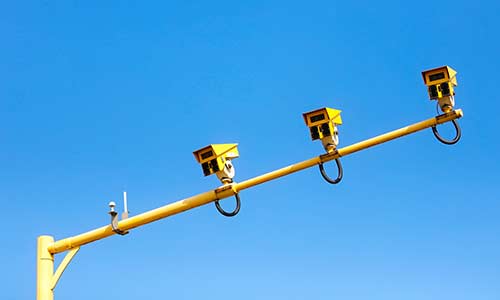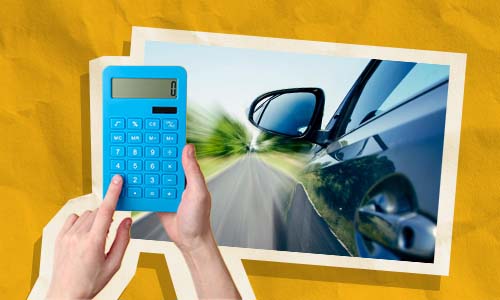Average speed cameras: How do they work?
Average speed cameras are a common sight on UK roads. They are used to encourage drivers to stick to speed limits (and catch out those who don’t).
Therefore, to avoid incurring costly speeding fines, it’s important to familiarise yourself with average speed cameras, how they work, what they look like – and the penalties you may receive if you are caught by one.
Get a free valuation
How average speed cameras work
Average speed cameras are designed to monitor how long it takes drivers to travel between two points on a stretch of road, with cameras placed at each checkpoint. The time it takes for a driver to travel from one checkpoint to another is used to calculate their average speed.
Despite the name, an average speed camera doesn’t take a picture of your vehicle – it merely records your average speed.
Where can you find average speed cameras?
Average speed cameras are commonly placed on motorways and dual carriageways. They are generally indicated by a black-on-white sign featuring the standard speed camera icon and text reading ‘Average speed check’.

Average speed cameras are also found on A-roads and in busy urban areas. They are sometimes temporarily placed in quieter spots during roadworks if the speed limit has been reduced.
What do average speed cameras look like?

What is the tolerance of an average speed camera?
The tolerance applied to an average speed camera is at the discretion of the police force operating it. Although some constabularies might not issue fines for drivers exceeding the limit by as much as 10% + 2mph, others may fine drivers that travel even 1mph over the limit.
There is no way of telling what tolerance (if any) will be applied by looking at an average speed camera. So, to put it simply, if you don’t want to incur any speeding fines, always obey the speed limit.
Are average speed cameras lenient?
Some average speed cameras do account for the slight inaccuracies of car speedometers. Those that do will usually allow a margin of a few miles per hour.
Do average speed cameras flash?
No, average speed cameras use infrared light technology, which allows them to read number plates in low light and unfavourable weather conditions, so they don’t flash like fixed speed cameras do. Average speed cameras show no visual indication that they’ve captured your vehicle.
Can you get fined by average speed cameras?
Yes, if an average speed camera catches you breaking the speed limit, a fine will automatically be sent to the address where the vehicle is registered. As average speed cameras do not take pictures, you will be asked to identify the driver when paying the fine.
What is the penalty if you get caught?
Like other types of speed cameras, an average speed camera issues speeding fines of between £100 and £1,000 (or up to £2,500 on motorways). The penalty you incur will depend on where you were caught speeding - and by how much you exceeded the limit.
You may also receive three or more penalty points on your licence depending on the severity of the speeding offence. In some circumstances (particularly if this is your first offence and the speeding infraction was relatively minor), you may be given the option to attend a speed awareness course to avoid incurring points on your licence.
If you feel that you should not have been fined, you can appeal the speeding ticket. However, we would advise against appealing unless you believe you have good grounds for doing so, as the success rate is relatively low – and you will be liable for additional costs if your appeal is rejected.
Frequently Asked Questions
Average speed cameras are generally a bright yellow, making them easy to spot whilst driving.
Some drivers attempt to ‘trick’ average speed cameras by crossing one camera’s checkpoint at a legal speed, then increasing their speed on the next stretch of road – and finally slowing back down to the legal limit before crossing the next checkpoint.
However, we would strongly advise against attempting this. It is highly unlikely that you will be able to fool speed cameras with this method, as the two cameras will use the time taken to cover the distance between them to calculate your average speed.
Therefore, if you cross the second checkpoint too quickly, you will be issued with an automated speeding fine, even if you crossed both checkpoints at legal speeds.
Furthermore, by making sudden calculated changes to your speed, you could also endanger yourself and other road users. As we mentioned earlier, your best and safest option is to stick to the speed limit.
If it’s working correctly, an average speed camera will be always switched on and monitoring traffic.
Due to their use of infrared technology, average speed cameras work just as well at night as they do during the day.











